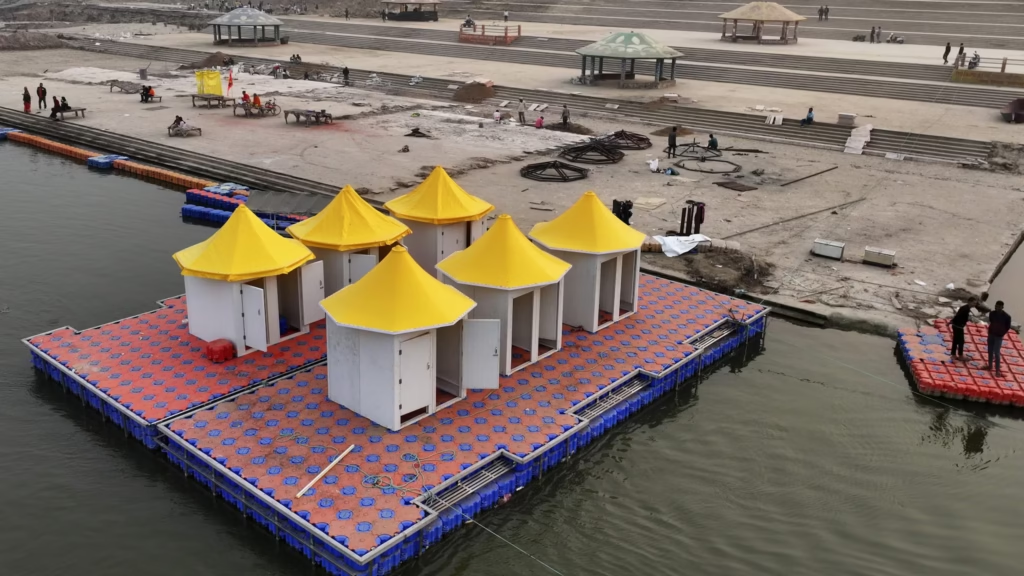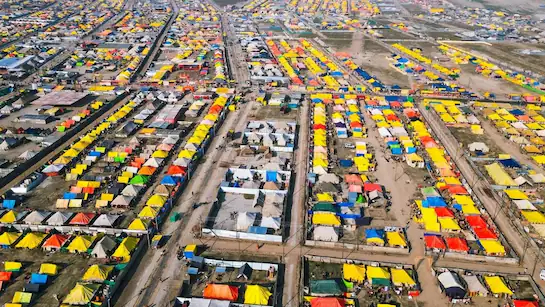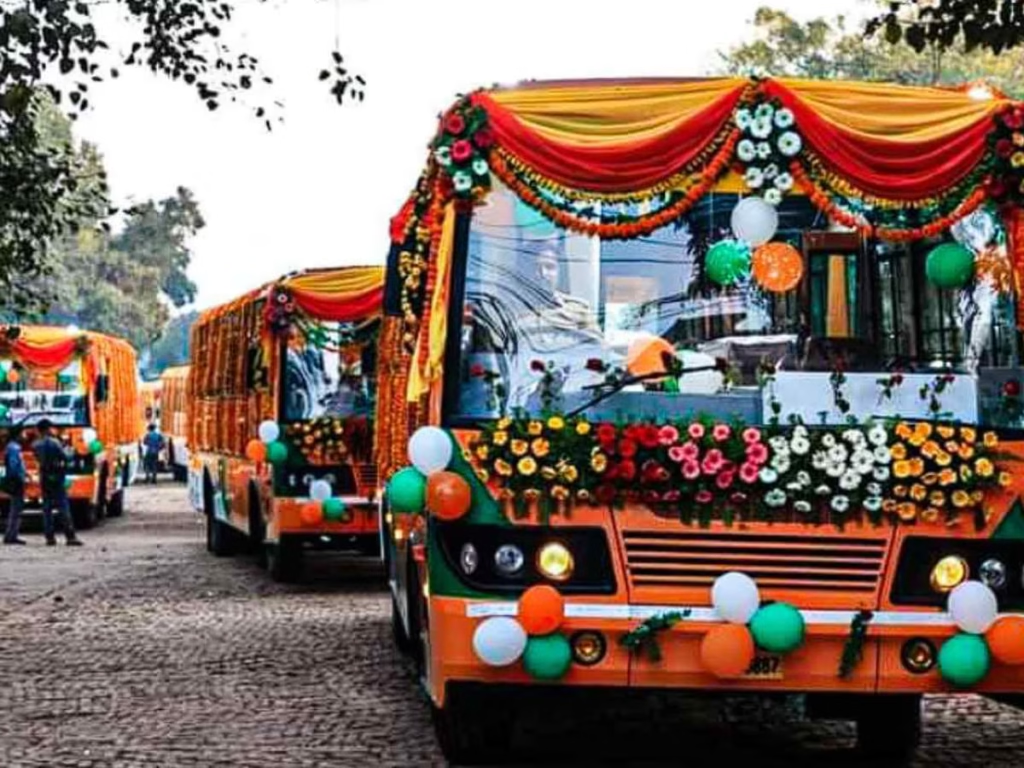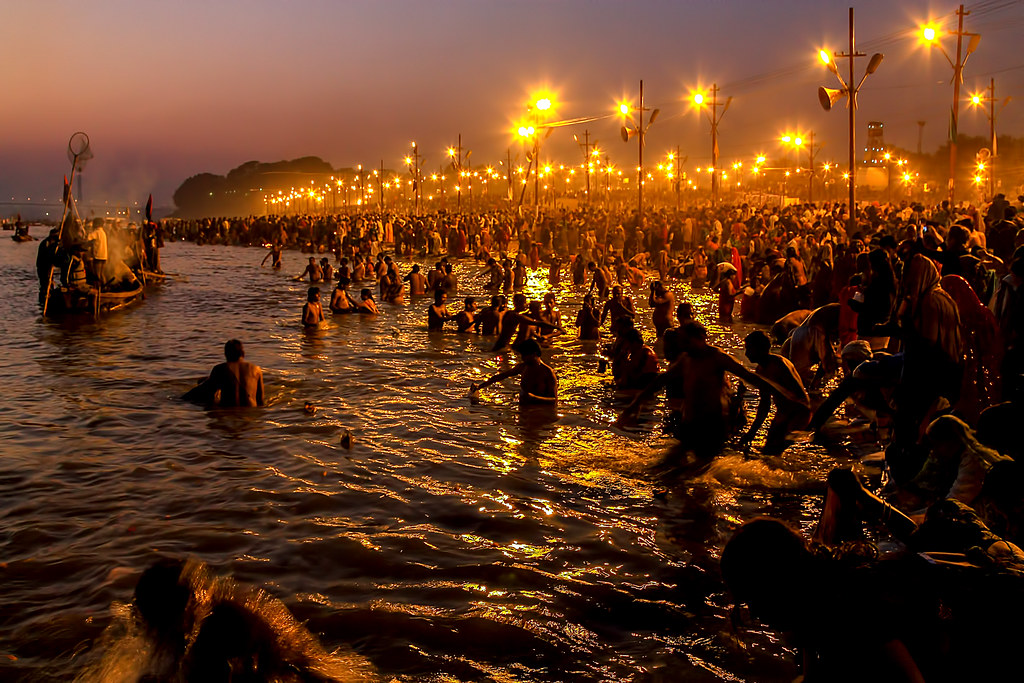The Maha Kumbh Mela, one of the largest religious gatherings in the world, is not just a spiritual event but also a significant economic driver. Held every 12 years in India, it attracts millions of pilgrims, tourists, and businesses, generating substantial revenue for the local and national economy. The economic impact of the Maha Kumbh Mela is multifaceted, encompassing tourism, hospitality, transportation, retail, and infrastructure development. While exact figures vary depending on the year and location, estimates suggest that the event generates billions of dollars in revenue.
Revenue Breakdown of Maha Kumbh Mela
| Sector | Estimated Revenue (in USD) | Percentage Contribution |
|---|---|---|
| Tourism & Hospitality | 1.5−1.5−2 billion | 40% |
| Retail & Local Markets | 800million−800million−1 billion | 25% |
| Transportation | 500−500−700 million | 15% |
| Infrastructure & Govt. | 300−300−500 million | 10% |
| Donations & Offerings | 200−200−300 million | 10% |




See video for more Information
Tourism and Hospitality: The Backbone of Revenue
The Maha Kumbh Mela attracts over 100 million visitors, including domestic and international tourists. This influx of pilgrims creates a massive demand for accommodation, food, and other services. Hotels, guesthouses, and temporary camps witness 100% occupancy, with prices often surging due to high demand. The hospitality sector alone contributes approximately 40% of the total revenue generated during the event. Additionally, local businesses, such as restaurants, street vendors, and tour operators, thrive during this period, further boosting the economy.
Retail and Local Markets: A Shopper’s Paradise
The Kumbh Mela is a hub for religious and cultural commerce. Pilgrims purchase a wide range of items, including religious artifacts, clothing, souvenirs, and handicrafts. Local markets and temporary stalls set up during the event see a significant spike in sales, contributing around 25% of the total revenue. The event also provides a platform for small-scale artisans and vendors to showcase their products, fostering economic growth at the grassroots level.
Transportation: Connecting Millions
Transportation plays a crucial role in the success of the Maha Kumbh Mela. Millions of pilgrims travel by trains, buses, and private vehicles to reach the event site. The Indian Railways often runs special trains to accommodate the surge in passengers, generating substantial revenue. Local transport services, such as auto-rickshaws and cycle rickshaws, also benefit from the increased demand. The transportation sector contributes approximately 15% of the total revenue.
Infrastructure and Government Revenue
The government invests heavily in infrastructure development to ensure the smooth functioning of the Maha Kumbh Mela. This includes building temporary bridges, roads, sanitation facilities, and medical camps. While these investments are costly, they generate long-term benefits for the region. Additionally, the government earns revenue through taxes, permits, and licenses issued to businesses operating during the event. This sector accounts for about 10% of the total revenue.
Donations and Offerings: A Spiritual Contribution
The Maha Kumbh Mela is deeply rooted in spirituality, and many pilgrims make donations and offerings at temples and religious institutions. These contributions, though voluntary, add up to a significant amount, estimated at 200−200−300 million. This revenue is often used for charitable activities and the maintenance of religious sites.
Long-Term Economic Benefits
Beyond the immediate financial gains, the Maha Kumbh Mela leaves a lasting impact on the local economy. The event boosts the region’s visibility, attracting future tourists and investors. Improved infrastructure, such as better roads and sanitation facilities, benefits residents long after the event concludes. Moreover, the skills and experience gained by local businesses during the Kumbh Mela enhance their competitiveness in the market.
FOLLOW:https://newsroom47.com/gold-rate-in-dubai-2025/
Newsroom 47
